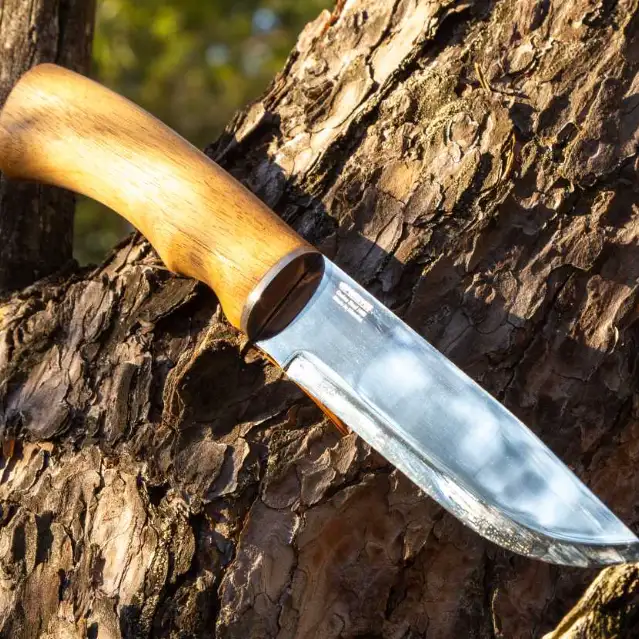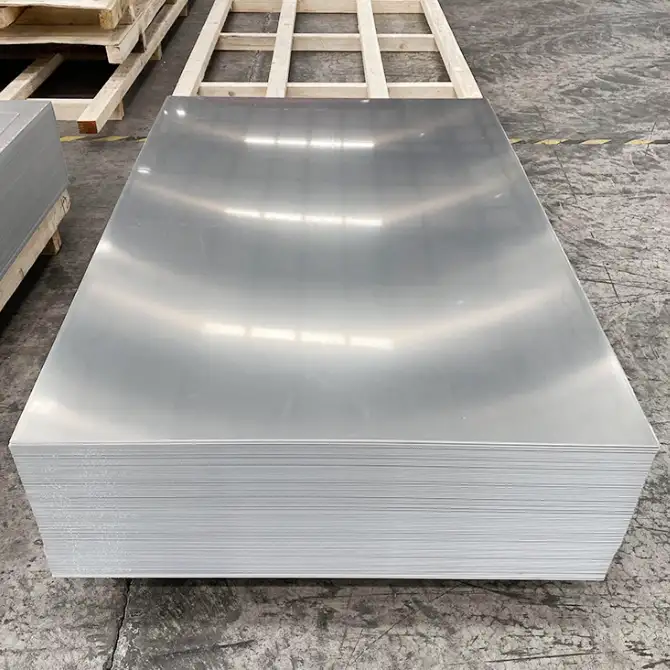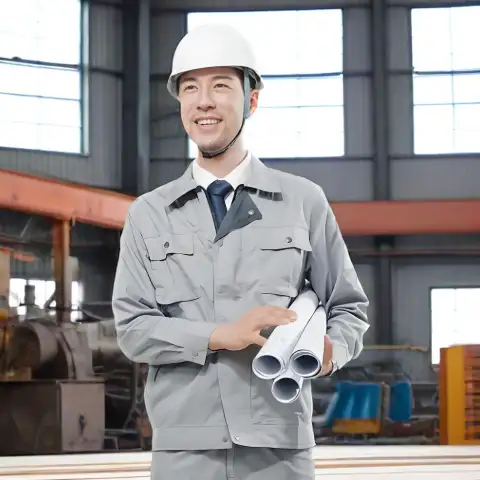1066 carbon steel is a high-carbon, heat-treatable plain-carbon grade with approximately 0.60–0.71% C (typical target ≈0.66%), balanced manganese and low impurity limits. It delivers high hardness and long wear life after appropriate quench-and-temper processing, and it is commonly specified for springs, cutting edges, wear parts, blades, and heavy-duty components where toughness and edge retention are required. For specification and chemistry reference, consult SAE J403 / UNS G15660 and related standards.
1066 steel datasheet
| Item | Typical value / range |
|---|---|
| Steel family | Plain carbon, high-carbon (quench+tempered capable) |
| Nominal carbon | 0.60 – 0.71 wt.% (target ≈0.66%) — high-carbon region |
| Manganese | ~0.85 – 1.15 wt.% (improves hardenability & strength) |
| Silicon | ≤ ~0.40 wt.% (deoxidation, strength contribution) |
| Phosphorus (P) | ≤ 0.04 wt.% (max typical) |
| Sulfur (S) | ≤ 0.05 wt.% (max typical) |
| UNS / common ID | UNS G15660, often marketed under SAE/AISI 1066 / SAE 1566 identifiers. |
| Typical hardness (normalized) | 140–200 HB (varies by heat treatment) |
| Typical hardenable range (HRC) | 50–60 HRC after Q+T depending on section size & recipe. |
| Typical uses | Springs, knives/blades, wear parts, heavy-duty springs, edge tools, saw teeth |
| Form supply | Bars, wire, plate, coil, strip, forgings (varies by mill) |
| Key standards used for chemistry/specs | SAE J403 (chemical ranges), ASTM/UNS cross references. |
Chemical composition
Below is a representative composition table built from common specification ranges used by mills and standards bodies for the 1066 / UNS G15660 family.
| Element | Typical range (wt.%) | Purpose / effect |
|---|---|---|
| Carbon (C) | 0.60 – 0.71 | Raises hardness potential and wear resistance; primary hardening element. |
| Manganese (Mn) | 0.85 – 1.15 | Improves hardenability, tensile strength and toughness. |
| Silicon (Si) | 0.15 – 0.40 | Deoxidizer; small strength contribution |
| Phosphorus (P) | ≤ 0.04 | Impurity — kept low to preserve toughness |
| Sulfur (S) | ≤ 0.05 | Impurity — controlled to limit embrittlement and machinability issues |
| Other trace elements | ≤ 0.1 combined | Mill dependent; low Cr, Ni if present at trace ppm only |
Notes on composition: the high carbon fraction is intentional: it enables high final hardness after quenching. Manganese is a second main alloying element and is typically held in the 0.85–1.15% window to produce consistent hardenability across common section sizes. These composition windows match SAE/UNS listings used by steel suppliers and mill specifications.

Microstructure and metallurgical behavior
-
In the as-rolled or annealed condition, 1066 displays a ferrite-pearlite matrix with a relatively high pearlite fraction due to the elevated carbon content; pearlite spacing and lamellae thickness depend on cooling rate.
-
After proper hardening, the microstructure becomes martensitic (quenched) with tempered martensite following tempering. Tempered martensite balances hardness and toughness; tempering temperature selection controls retained hardness vs. ductility trade-offs.
-
Grain-size control during hot-working and controlled cooling influence toughness and fatigue life; mills supplying spring or blade stock frequently specify TMCP or controlled rolling to maintain desirable grain size.
Typical mechanical properties
Mechanical behavior varies strongly with condition (normalized, quenched + tempered, cold-worked). The following are typical ranges for engineering estimation — observe that final values must always be verified by mill test reports or supplier certificates.
| Condition | Tensile strength (MPa) | Yield strength (MPa) | Elongation (%) | Brinell/HRC (typical) |
|---|---|---|---|---|
| Annealed | 450–650 | 250–450 | 10–22 | 140–220 HB |
| Normalized | 600–800 | 350–600 | 8–16 | 170–260 HB |
| Quenched + tempered (objective hardness 50–58 HRC) | 800–1300+ | 600–1100 | 6–15 | 50–58 HRC possible (depends on section & recipe) |
Practical remarks: measurements vary with manufacturing route, section thickness and thermal history. Knife and blade makers report achievable hardness in the 56–58 HRC range for thin sections with aggressive quenching, while thicker components will show lower hardenability due to section size unless Mn or other hardenability aids are adjusted.

Heat treatment
Heat treatment converts the alloy’s carbon-rich microstructure into martensite and then tempers it to the required balance of hardness and toughness. The following are industrially used approach summaries (general guidance; always validate on production samples).
Typical process sequences
-
Full anneal (stress relief / softening for machining)
-
Heat to 760–820°C (1400–1510°F) and hold for sufficient soak (time depends on section), then slow cool in furnace to ~550°C, then air cool. Purpose: remove stresses and soften for shaping or machining.
-
-
Normalizing (refine grain, improve toughness)
-
Heat to 830–900°C (1526–1652°F), soak, then air cool. Produces refined ferrite/pearlite for improved toughness relative to coarse as-cast structure.
-
-
Hardening (austenitize + quench)
-
Austenitize typical range: 780–820°C (1440–1510°F) — exact temperature depends on supplier guidance. Soak to equalize, then quench rapidly (oil quench typical for many sections; water or polymer is used for thin, small parts where higher hardenability is required). Thicker sections may require longer soak and protective environments.
-
Quench medium selection balances distortion risk and martensite formation.
-
-
Tempering
-
Temper at 200–600°C (390–1110°F) depending on desired hardness/toughness target. Lower temper temps (~180–220°C) preserve high hardness for cutting edges, while higher temps (~450–600°C) improve toughness and relieve brittleness.
-
Typical knife/blade tempering for durable edge: 180–220°C followed by cryo treatment if retained austenite reduction is needed. Heavy-duty springs or shock parts may be tempered higher to improve fatigue life.
-
Sources & industrial charts: general heat-treat recipes align with heat-treatment handbooks and industry references; consult the heat-treating data book or a qualified heat-treat vendor for trials on the specific part geometry to finalize temperatures and quench media.
Forming, machining, welding and fabrication notes
Forming and cold work
-
Due to high carbon content, 1066 becomes harder and less ductile after cold deformation. Limit severe cold forming; use intermediate anneals where substantial plastic shaping is required.
Machining
-
In the annealed condition, machinability is fair but harder than low-carbon steels. S and P control and addition of machinability aids may be provided by mills (e.g., leaded variants like 10L66 exist in other grade series) but standard 1066 lacks lead.
-
Use rigid fixturing, sharp carbide tools, and conservative depths of cut if machining in hardened or tempered conditions.
Welding
-
Welding high-carbon steels is challenging due to cold-cracking and HAZ hardening. Recommendations:
-
Preheat (150–300°C) before welding for moderate sections.
-
Use low hydrogen electrodes/weld wires.
-
Post-weld temper or perform PWHT to restore toughness in HAZ.
-
For critical high-hardness parts (blades, springs), avoid welding unless specified weld procedures and qualifications are in place.
-
Surface protection and finishing
-
Coatings: for corrosion mitigation (carbon steels are not stainless): phosphate coatings, black oxide, zinc plating, electrocoat, or paint systems.
-
Case-hardening vs through-hardening: 1066 typically through-hardens; for a hard surface with ductile core, consider carburizing steels or surface treatments like induction hardening, nitriding (but nitriding efficacy depends on alloying content).
-
Grinding and sharpening: in hardened condition, thin sections (knives, blades) are ground with appropriate abrasive to avoid overheating (which can temper/cause local softening).
Corrosion behavior and environment
-
1066 is non-stainless plain carbon steel; it corrodes in wet or chloride environments unless protected. Common mitigation: coatings (zinc, paint), oiling for blades, or selecting stainless alternatives if corrosion resistance is essential.
Common applications and selection guidance
-
Knives & edged tools: thin, quenched/tempered blades that need good edge retention and easy resharpening.
-
Springs & spring wire: certain spring applications benefit from the hardenability and resilience when processed correctly.
-
Wear parts & cutters: shear blades, agricultural knives, and industrial cutting edges.
-
General engineering parts: shafts, pins, or heavy-duty parts where high surface hardness is needed.
Selection note: if corrosion resistance or simpler weldability is necessary, consider stainless or lower carbon martensitic steels (e.g., 420/440 series for stainless), or medium carbon steels (1045) for better weldability. For maximum edge retention at cost of some toughness, higher carbon grades (1095, 52100 variants) might be compared. Use the comparison table below for quick orientation.
Cross-references and equivalents
Many sources and suppliers list equivalents linking "1066" nomenclature to international designations:
| Common label | Equivalent / remarks |
|---|---|
| AISI / SAE 1066 | Often referenced in older AISI lists and in knifemaking resources. |
| UNS G15660 | Common UNS number used in specification tables for this carbon range. |
| GB 65Mn | Chinese GB grade frequently used as an equivalent in bar/coil supply (note: GB 65Mn has similar C & Mn ranges; check specific standard revision). |
| ASTM SAE 1566 | Supplier/standard cross references sometimes list SAE 1566 in comparison tables. |
Caveat: Because naming conventions and local standards sometimes diverge, always confirm the mill test certificate (MTC) with chemical analysis and mechanical test data for contract acceptance.
1066 Carbon Steel Price 2025
Market prices for “1066 / equivalent 65Mn” high-carbon / spring steels vary widely. Price depends primarily on product form (coil/plate/strip/wire/bar), heat-treatment state (quenched & tempered / annealed / normalized), minimum order quantity (MOQ), country of origin (China / India / Europe / USA) and delivery terms (FOB / CIF / EXW). Based on public supplier listings and market observations, common price bands (USD per ton) are:
-
General commodity hot-rolled / generic carbon steel (reference like A36/AISI generic): about $880–$1,150 / ton.
-
Market items explicitly labeled 1066 / equivalent spring steel (typical factory raw supply): about $300–$700 / ton (many suppliers list in the $500–$700 / ton band; some listings show lower values depending on spec and MOQ).
-
Processed spring steel / heat-treated 65Mn / 1066 spring strip or hardened & tempered products: about $1,450–$1,500 / ton (finished spring strip and heat-treated band is significantly more expensive).
Note: these are observational ranges aggregated from public trading platforms and supplier catalogs. Actual quotes vary significantly by specification (thickness, width, hardness), packing, minimum order, and trade terms.
Quality control and acceptance testing
For purchaser inspection and supplier acceptance, common deliverables include:
-
Mill Test Certificate (MTC) showing heat number, chemistry, tensile/Y.S., elongation, hardness.
-
Non-destructive testing if requested (ultrasonic or magnetic particle depending on geometry).
-
Hardness checks (Brinell, Rockwell) post heat treatment.
-
Dimensional & visual inspection per purchase order.
Sustainability and recycling
-
1066, like most carbon steels, is fully recyclable through standard ferrous scrap streams, and its reuse aligns with circular steel production models. Energy intensity of re-melting and alloy control should be considered in life-cycle assessments.
Tables: heat-treat recipes and comparisons
A — Example heat-treat recipes (for engineering starting points; validate with trials)
| Purpose | Austenitize | Quench | Temper |
|---|---|---|---|
| Soften for machining | 760–800°C; slow furnace cool | N/A | N/A |
| Knife thin blade (~3–6 mm) | 780–800°C; 10–30 min soak | Oil or water (thin sections) | 180–220°C x 1–2 hr; repeat if needed |
| Wear part (medium section) | 800–820°C; soak | Oil quench (avoid water if distortion risk) | 200–350°C to balance hardness/toughness |
| Spring (fatigue life) | 800–820°C | Oil | 300–450°C to improve toughness & fatigue |
B — Quick grade comparison (1066 vs similar carbon grades)
| Grade | Carbon (%) | Typical use | Hardening potential |
|---|---|---|---|
| 1045 | 0.43–0.50 | Shafts, general parts | Moderate |
| 1066 | 0.60–0.71 | Blades, springs, wear parts | High (good for HRC 50+) |
| 1095 | 0.90–1.03 | High edge retention knives | Very high (brittle unless tempered carefully) |
| 65Mn (GB) | ~0.65 | Spring/knife in China market | Comparable to 1066 (often used interchangeably) |
FAQs
Q1: Is 1066 the same as 65Mn?
A: Many supplier tables and cross-reference lists map 1066 to 65Mn (GB) and UNS G15660. They share similar carbon and manganese ranges, but exact tolerances can vary by standard edition — confirm by reviewing the MTC.
Q2: What hardness can I expect after quench and temper?
A: Thin sections can reach ~56–58 HRC with aggressive recipes. Thicker sections will show lower HRC unless hardenability aids or special alloy variants are used. Realize hardness depends on quench severity, section modulus and tempering temperature.
Q3: Can I weld 1066?
A: Welding is possible but requires preheat, low-hydrogen filler, and post-weld tempering to avoid cracking. For critical welded assemblies, design for lower carbon steels or prequalified procedures.
Q4: Is 1066 suitable for knife making?
A: Yes; its carbon content makes it popular for budget and utility blades where a balance of edge retention and toughness is desired. Proper heat treatment is crucial for edge performance.
Q5: How does manganese affect performance?
A: Manganese increases hardenability and toughness, assists deoxidation during melting, and supports higher strength after heat treatment. Typical 0.85–1.15% Mn is a good compromise.
Q6: What testing should I require from the supplier?
A: Require MTC with chemical analysis, tensile and yield values, elongation, and hardness. For critical use, require Charpy impact or fatigue testing to validate performance.
Q7: Are there leaded (machinable) versions of this grade?
A: Mill offerings sometimes include machinability variants with added lead (L grades), but standard 1066 typically has no lead. If you need enhanced machinability, request a leaded variant and confirm chemistry.
Q8: Can 1066 be nitrided?
A: Nitriding efficacy depends on alloy content; plain carbon steels nitridability is limited compared to alloy steels. Induction hardening or case hardening of compatible alloys may be preferable.
Q9: Where is 1066 commonly supplied from (forms)?
A: Bars, wire, strips, coil, and plate in commercially produced sizes. Spring wire is commonly drawn from this chemistry in many markets.
Q10: What are key design cautions?
A: Avoid designs that trap stress concentrations in hardened condition, account for reduced ductility at high hardness, and include finish machining allowances before final hardening where tight tolerances are required.
Closing notes and procurement tips
-
Always request and archive the mill test certificate (MTC) and supplier process description when placing orders for 1066 in any form.
-
For critical safety or wear parts, run incoming inspection: check chemistry, hardness and sample mechanical tests.
-
If you plan to heat treat in your shop, run small proof coupons to finalize your recipe before batch processing parts — that reduces rejection and distortion risk.
Authoritative references
- SAE J403 — Chemical Compositions of SAE Carbon Steels (SAE International)
- ASTM Standards — steel specifications & related documents (ASTM International)
- ASM Handbooks Online — Metallurgy, Heat Treating and Materials Data (ASM International)
- Heat Treatment of Steels — technical references and handbooks (Academic/Publisher resources)

